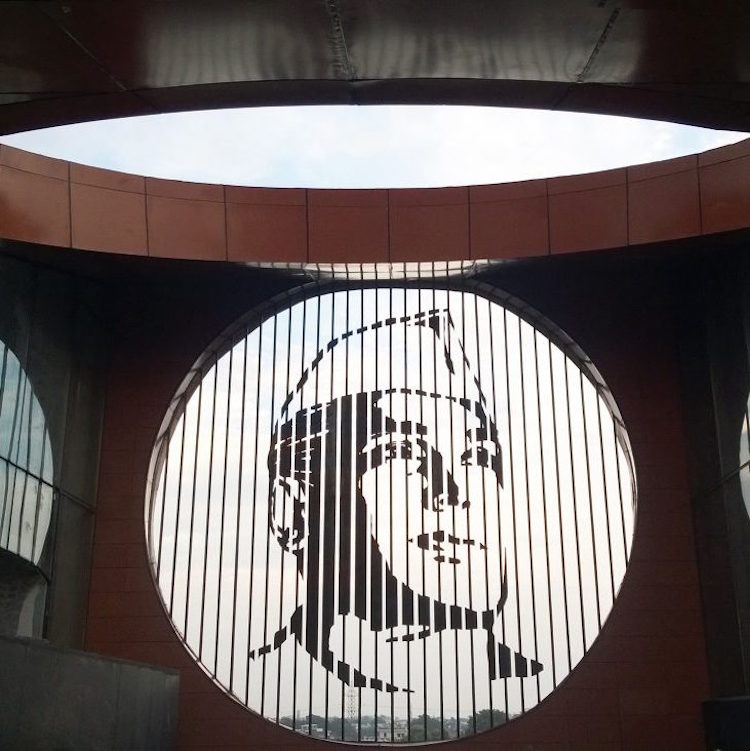LUCKNOW, India — You don’t see much old timey socialist architecture nowadays. Russia had a throwback to that style with their Museum for Rural Labor about a year ago, but that’s about it. Recently, however, Archohm architecture studio in India revealed their Museum of Socialism, a large wedge-shaped brick memorial to the late Jayaprakash Narayan.
In addition to the impressive inclined planes of red and black brick the museum has a circular window of metal bars that show Narayan’s portrait, which is also reflected in a nearby pane of glass. The nine-meter tall building rises to a pavilion that overlooks a nearby park and convention center.
It’s an experiment in narrative using architecture, according to the studio.
The museum within is an experience in space design with the depiction of Jayaprakash Narayan as a chronological narrative of a linear journey. It is divided into two zones; the zone of absorption and the zone of reflection. As the names suggest, these spaces enable absorption of information triggering curiosity and contemplation which then is expected to lead to reflection and assimilation.
Thus the museum is not just a container that preserves frozen albeit inspiring moments of a past but breeds them and ensures that they percolate into current reality, and lay the foundation for the future. Thus while the various exhibits and narratives remain centre stage, the building offers surfaces, volumes and elements as tactile backdrops.
I like the grand scope of the museum, but for monuments to socialism I think I prefer Russia’s simple Museum for Rural Labor. I understand that Archohm’s museum is dedicated to a figure and so he takes center stage, but something about the anonymity of tools hanging against a bare wall feels a little more romantic to me. I understand that words like “assimilation” used in the description are probably just accidents of translation, but they highlight a theme in the work that feels a little manipulative. Also, while the contrast between red and black is exciting, we’ve seen too many examples of bricks as cladding to be satisfied with more plain, bulky heft.
Do you love or loathe this work of contemporary brick architecture? Let us know in the comments.








Add your valued opinion to this post.